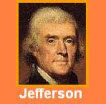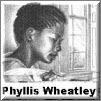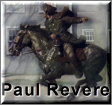| A | B |
|---|
| Samuel de Champlain | This French explorer established a settlement in Quebec, Canada. |
| Robert La Salle | This explorer claimed the Mississippi River Valley for France. |
| John Cabot | He explored eastern Canada for England. |
| Francisco Coronado | He claimed the southwest part of the U.S. for Spain. |
| Ghana, Mali, and Songhai | These African civilizations became rich by controlling trade in West Africa |
| Portugal | Explorers from this country explored West Africa. |
| Portuguese traders | These traders carried goods from Europe to West African empires, trading metals, cloth, and other manufactured goods for gold. |
| Roanoke Island | The Lost Colony |
| Jamestown | An economic venture by the Virginia Company and the first permanent English settlement in North America (1607). |
| Plymouth colony | This colony was settled by Pilgrims, separatists from the Church of England, who wanted to avoid religious persecution. |
| Massachusetts Bay Colony | This colony was settled by the Puritans who wanted to avoid religious persecution in England. |
| Pennsylvania | This colony was settled by the Quakers, who wanted to have freedom to practice their faith. |
| Georgia | This colony was settled by people who had been in debtor’s prisons in England. |
| Large landowners | They lived predominately in the South and relied on indentured servants and/or slaves for labor. |
| Artisans | They worked as craftsmen in towns and on plantations. |
| Women | They worked as caretakers, homemakers, could not vote and had little chance for education. |
| Indentured servants | Men and women who agreed to work without pay for a certain number of years in return for passage to the New World. |
| Slaves | They were captured in their native Africa, sold to traders, shipped to the colonies and sold. |
| Colonists | They had to obey English laws that were enforced by governors. |
| Colonial governors | They were appointed by the king or by the proprietor and enforced English laws in the colonies. |
| Colonial legislatures | They made laws for each colony and were monitored by colonial governors. |
| Stamp Act | A tax imposed by England to raise necessary revenue to pay the cost of the French and Indian War. |
| Proclamation of l763 | England tried to prevent settlers from moving west with this proclamation. |
The Declaration of Independence,  | A document proclaiming independence from England. It stated that people have natural rights to life, liberty, and the pursuit of happiness. |
| Unalienable rights | These are rights that cannot be taken away—life, liberty, pursuit of happiness. |
 | The British king during the Revolutionary era |
 | The British general who surrendered at Yorktown |
John Adams,  | He championed the cause of independence and became the 2nd president. |
 | Commander of the Continental Army |
 | Main author of the Declaration of Independence |
 | He was an outspoken member of the House of Burgesses. He inspired colonial patriotism with his "Give me liberty or give me death" speech. |
 | He was a prominent member of Continental Congress, and helped Jefferson create the Declaration of Independence. |
 | A former slave who wrote poems and plays supporting American independence |
 | A patriot who made a daring ride to warn colonists of the British arrival; he cried "The British are coming!". |
Boston Massacre,  | Colonists in Boston were shot after taunting British soldiers |
Boston Tea Party,  | Samuel Adams and Paul Revere led patriots in throwing tea into Boston Harbor to protest tea taxes |
 | Here, delegates from all colonies met to discuss problems with England and to promote independence |
 | This was the first armed conflict of the Revolutionary War. |
| July 4, 1776 | The day the colonies approved the Declaration of Independence, declaring themselves free from England. |
 | This was the colonial victory over forces of Lord Cornwallis that marked the end of the Revolutionary War |
 | England recognized American independence in this treaty |
The Battle of Saratoga,  | This colonial victory was the turning point in the Revolutionary War |
| John Locke | This philosopher, whose ideas were expressed in the Declaration of Independence, believed that people have natural rights to life, liberty, and property, and that government is created to protect these rights and has only the limited and specific powers the people give it. |
| The New England colonies | Appalachian Mountains, Boston harbor, hilly terrain, rocky soil, jagged coastline....This describes the geography of: |
| The New England colonies | Fishing, shipbuilding industry and naval supplies, trade and port cities -Skilled craftsmen, shopkeepers....this describes the economy of: |
| The New England colonies | Village and church as center of life; religious reformers and separatists. This describes society in: |
| The New England colonies | Town meetings were important in the politics of these colonies |
| The mid-atlantic colonies | Appalachian Mountains, coastal lowlands (harbors and bays, wide and deep rivers), rich farmlands....This describes the geography of: |
| The mid-atlantic colonies | Livestock and grain; trading; skilled workers; fishermen. This describes the economy of these colonies: |
| The mid-atlantic colonies | Villages and cities; varied and diverse lifestyles; diverse religions. This describes society in these colonies: |
| The mid-atlantic colonies | Market towns were common in: |
| The southern colonies | Appalachian Mountains, Piedmont, Atlantic coastal plain, good harbors, rivers, humid climate. This describes the geography of these colonies: |
| The southern colonies | Large farms/plantations; cash crops; wood products; small farms; slavery. This describes the economy of these colonies: |
| The southern colonies | Plantations; slavery; mansions; indentured servants; few cities; few schools; Church of England. This describes society in these colonies: |
| The southern colonies | Political and civic life was structured around counties in these colonies |
| Spanish explorers | These explorers conquered and enslaved American Indians. They brought Christianity to the New World and brought diseases. |
| French explorers | These explorers established trading posts and spread Christian religion |
| English explorers | These explorers established settlements and claimed ownership of land. They learned farming techniques from American Indians and traded with them. |